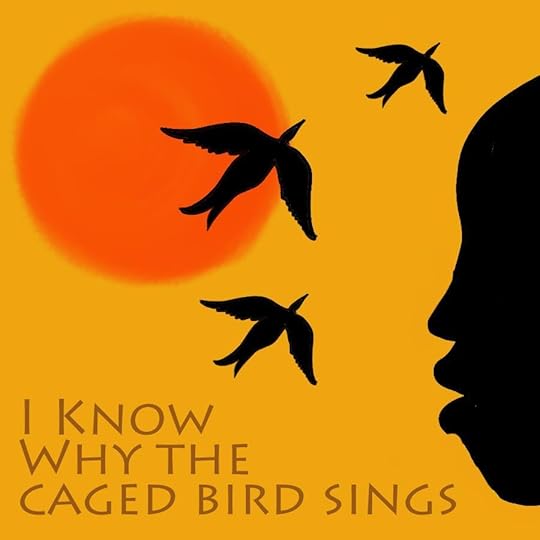How Your Life Makes Your Writing Better.
Ever heard the classic writing advice, “Write what you know”? It’s one of those phrases that sounds simple enough—until you sit down to actually do it and think, “Wait, what do I know?”
Spoiler alert: you know a lot more than you think. And no, this advice doesn’t mean every story you write has to be a thinly veiled autobiography. It just means that your life—your crazy, messy, beautiful, heart-wrenching, hilarious life—is a goldmine of inspiration.
Your personal experiences shape your creative writing in subtle and not-so-subtle ways, from the emotions your characters feel to the way they talk, fight, love, and dream. So, let’s dive into five powerful ways your life influences your storytelling—complete with real-life examples from literature and a few of my own stories.
Here are 5 Ways to Use Your Life Experience in Writing.
 #1 – Authentic Emotions and Relationships.
#1 – Authentic Emotions and Relationships.
Let’s get real for a second. One of the most profound ways personal experience influences writing is through emotions and relationships. You know those moments when a book makes you cry or laugh out loud?
That’s not just because the author has a knack for stringing words together—it’s because they’re channeling something real.
Think about J.K. Rowling’s depiction of loss in the Harry Potter series. The raw grief Harry feels when he learns about his parents’ death? It hits so hard because Rowling herself dealt with significant loss during the writing process. Her own heartbreak seeps into the story, making it resonate on a deeply human level.
In my own writing, I’ve seen how my personal experiences shape the way I portray grief and acceptance.
One of my books, Things We Do For Love, delves into the pain and frustration of caring for a parent with Alzheimer’s. My mother has battled this cruel disease for 15 years, and writing about the protagonist’s tangled emotions—love mixed with exhaustion and guilt—allowed me to process my own feelings. The story became not just a way to honor her but also a means of transforming pain into something meaningful and relatable.
Beyond personal grief, even minor, mundane emotions play a role. Remember that awkward nervousness before a first date or the gut punch of a sudden betrayal? Those are universal experiences that readers immediately recognise. Mining your own moments of vulnerability can breathe life into your characters, making them feel less like paper cutouts and more like real people.

#2 – Crafting Realistic Dialogue.
Ever read dialogue so cringy it makes you want to chuck the book out the window?
Yeah, me too. Realistic dialogue is tricky, but it’s one area where personal experience really pays off.
Listening to how people actually speak—their rhythms, quirks, and awkward pauses—helps create conversations that feel authentic.
Take Quentin Tarantino, for example. The man is a dialogue wizard. Think about the iconic Pulp Fiction scene where Jules and Vincent debate foot massages and burgers before going to, well, murder some people.
It’s bizarrely mundane and brilliantly real, capturing that mix of casual banter and underlying tension. Tarantino’s knack for capturing everyday speech makes his characters feel like people you’ve overheard at a diner—or in some sketchy basement.
Living abroad gave me an ear for accents, idioms, and cultural nuances, which is why my multilingual characters sound authentic instead of like a bad Google Translate experiment. Whether I overhear street vendors arguing or friends swapping stories, I store those snippets away like dialogue treasure. Then, I let them loose when crafting conversations that pop off the page.
The key here is to avoid perfect dialogue. Real people rarely speak in flawless sentences. They interrupt, trail off, mispronounce words, and repeat themselves. Including those imperfections makes your characters more believable and relatable.

#3 – Building Complex Characters.
Let’s face it: cardboard characters are boring. Real people are messy, complicated, and full of contradictions.
Drawing from real life—your quirks, your best friend’s weird habits, that annoying neighbor who always shouts at his cat—gives characters depth and dimension.
A great example is Harper Lee’s Atticus Finch in To Kill a Mockingbird. He’s based on Lee’s own father, a lawyer with a fierce sense of justice.
Because Atticus is rooted in reality, he’s both noble and achingly human, which is why he sticks with us long after the last page.
My first-grade teacher inspired one of my most beloved characters, Helen from Full Circle.
This Holocaust survivor carried herself with unbreakable grace and strength despite unimaginable trauma. I wanted Helen to embody that same quiet resilience. Real-life inspiration makes characters richer because they’re layered with truths drawn from actual lives.
Even when creating antagonists or flawed protagonists, digging into your own darker impulses or recalling people who’ve wronged you can add nuance and empathy. Villains aren’t just evil for the sake of being evil—they have motivations rooted in human experience, whether it’s pride, jealousy, or desperation.

#4 –Setting That Feels Alive.
Ever been so absorbed in a book that you could practically smell the rain or feel the heat of the sun on your skin?
That’s a sign of a well-crafted setting—one that’s vivid, textured, and grounded in real experience.
Carlos Ruiz Zafón’s The Shadow of the Wind is a masterclass in this.
His depiction of Barcelona—dark, labyrinthine, soaked in history—feels like a character itself. You can almost hear the echoes of secrets whispering through the alleys.
I try to weave that same richness into my settings. In Things We Do For Love, the Bach family house is based on a real place in Oxford—a charming, slightly creaky old house where my parents lived while my father was a visiting professor. Spending time there helped me infuse the story with authentic details that ground the setting without overwhelming it.
Whether your story is set in your hometown or an imagined world, grounding it in sensory details from places you know will make readers feel like they’ve been there, too.

#5 – Channeling Personal Struggles into Themes.
Writing from your own struggles is like bleeding on the page—but it’s also incredibly cathartic.
Maya Angelou’s I Know Why the Caged Bird Sings tackles racism and trauma with such brutal honesty that it both hurts and heals.
By drawing from her own pain, Angelou transforms her personal experiences into a universal message of resilience.
In my stories, themes of loss and rebirth keep cropping up—not because I’m obsessed with tragedy, but because I’m fascinated by how people find strength in the wreckage. Writing about overcoming obstacles, no matter how daunting, is my way of honoring the human spirit.
Personal themes don’t have to be heavy or tragic. Humor, hope, and the ridiculousness of everyday life can be just as meaningful. Leaning into your own quirks and joys will create stories that resonate with readers on a fundamental level.
In Conclusion – Writing what you know doesn’t mean airing your deepest secrets or turning your life into a tell-all. It means channeling your emotions, experiences, and perspectives into real and relatable stories. Use your life as a wellspring of inspiration, and your writing will be richer for it.
So, next time you’re stuck, don’t just stare at the blank page—dig into your own heart. Your truth might be exactly what your story needs.
Now it’s YOUR turn – What’s one personal experience that you think would make an amazing story?
Would love to get your input in the comment box below.
The post How Your Life Makes Your Writing Better. appeared first on Vered Neta.



